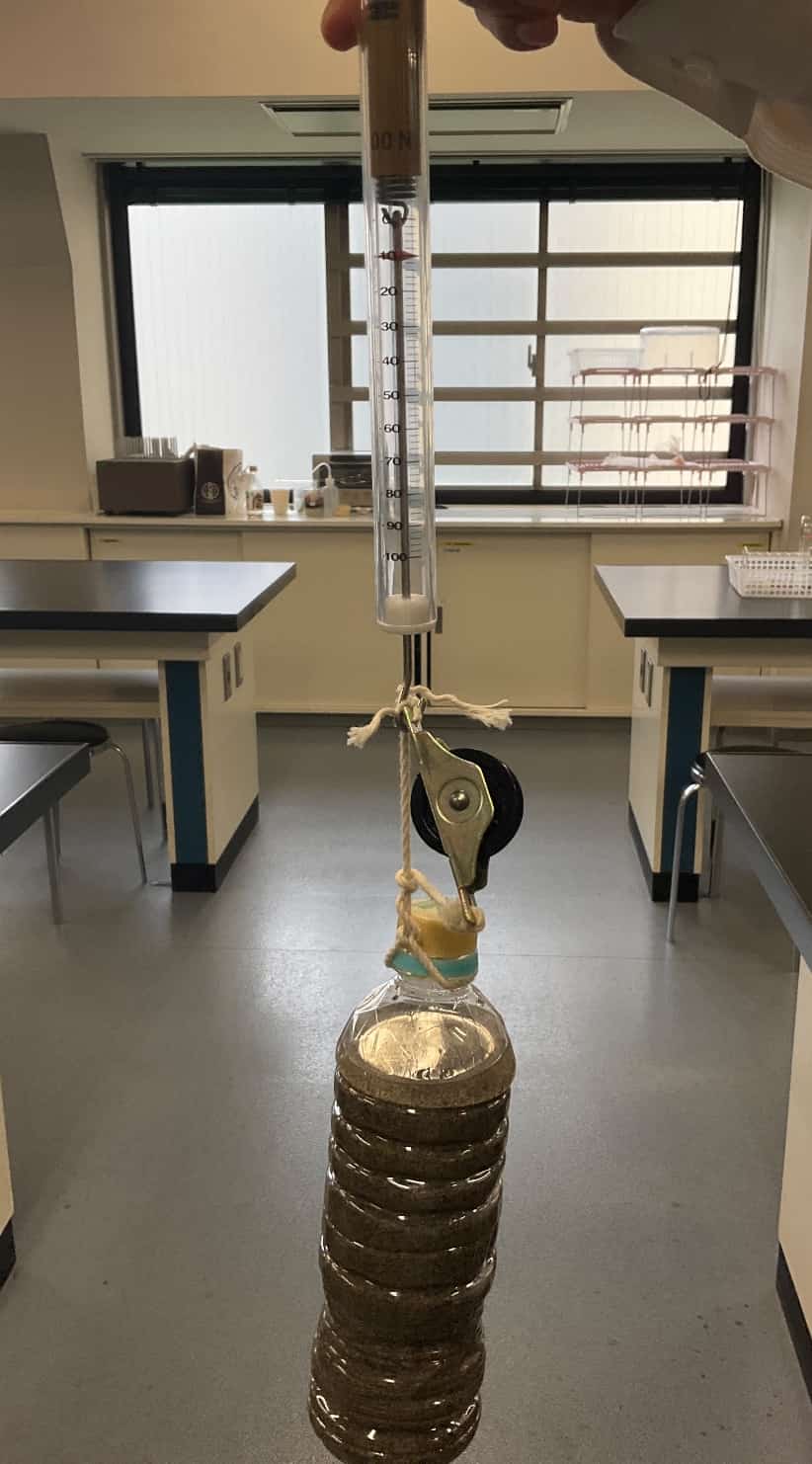Learn the “Principle of Work” with Your Hands! A DIY Movable Pulley That Will Captivate Your Students!
I’m Ken Kuwako, a science trainer. Let’s have fun with science on this site.
Hello, science teachers! Today, I’d like to introduce a hands-on experiment idea for a movable pulley that uses common materials and will surely make your students say, “Oh, I get it!”
Have you ever tried to explain in a textbook that “a movable pulley halves the force,” only to get a lukewarm reaction from your students? That’s understandable. The small movable pulleys sold by school supply companies are often designed for light objects like 100g or 200g weights, making it hard for students to physically feel the reduction in force. Plus, it’s not practical to buy enough of these expensive teaching materials for every student.
But don’t worry. This time, I’ll show you how to make a large movable pulley for just 200 yen that will let students truly feel the force reduction, making them exclaim, “Wow, that’s light!” With this DIY material, your physics lessons are guaranteed to become much more engaging and help your students’ understanding deepen.
Science Recipe
The key to this experiment is a surprising item you can find at any home center: a wheel used for sliding doors or room partitions. The affordable price—about 350 yen for two—is also a major plus.
Materials
Wheels for doors or sliding doors (about 350 yen for two; sold at home centers)

In addition, you will need kite string, a plastic bottle, sand, and water.
How to Make It
① Check the top and bottom of the wheel

This side should be on top.
② Make the movable pulley
For the weight, fill a plastic bottle with sand and water so that it weighs approximately 1 kg (10 N) along with the movable pulley you’re about to make. With a sufficient weight like this, the students will be able to physically feel the difference.

Now, let’s assemble the movable pulley.

Thread the string through the side hole of the pulley,

and tie a knot.

Tie it around the neck of the plastic bottle.

Tie the other side so the pulley hangs horizontally.

Finally, thread the string through the side of the wheel and out the other hole. Fix one end to a stand or another stable object.

Let’s Start the Experiment!
First, let’s do a comparison. Pull the weight of the plastic bottle directly with a spring scale. The total weight is about 1kg, so the force is approximately 10N (using a 100N spring scale from Narika).

As you can see from the photo, the scale shows exactly 10N.
Next, attach the weight to your DIY movable pulley and pull it.


What do you see? The spring scale now reads exactly 5N!
The result—the force being halved—is obvious when you think about it. The work of supporting the weight is being shared by two things: you (the spring scale) and the other end of the string, which is fixed to the “ceiling.” You could also have a student hold the other end of the string. This allows students to learn the principle of work by feeling it with their own hands—they can lift the weight with half the force.
If you prepare enough movable pulleys for each student to try, their understanding is sure to skyrocket.
Through this experiment, you can help your students physically grasp the core principle of work: that a movable pulley halves the force required in exchange for pulling the rope twice the distance.
About Inquiries and Requests
Discover the wonder and fun of science in a more familiar way! I’ve put together easy-to-understand explanations of fun science experiments you can do at home and tips for them. Please feel free to search for more!
・For more information about the operator, Ken Kuwako, click here
・For various requests (writing, lectures, experiment classes, TV supervision, appearances, etc.), click here
・Article updates are delivered via X!
![]() The Science Channel delivers experiment videos!
The Science Channel delivers experiment videos!


